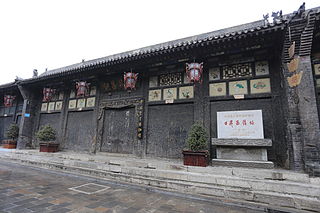 W
WThe Banque Industrielle de Chine, or Industrial Bank of China, was chartered in 1913 and was closed in 1922. The bank's Chinese office was in Shanghai and its European office in Paris. Its chief director was A.J. Pernotte.
 W
WChinese Soviet Republic National Bank was a bank established by Chinese Communist Party-controlled "Chinese Soviet Republic" in the Republic of China. Its governor was Mao Zemin, the younger brother of Mao Zedong. It involved in providing mortgage, loan, saving, bill, government bond services and issuing banknotes and coins in the CCP's controlled region.
 W
WDeutsch-Asiatische Bank (DAB) was a foreign bank in China. Its principal activity was trade financing, but together with English and French banks, it also played a role in the underwriting of bonds for the Chinese government and in the financing of railway construction in China.
 W
WThe Farmers Bank of China was a former Taiwanese bank. It was founded on April 1, 1933, in Hankou, Mainland China, from the amalgamation of provincial agricultural banks in Henan, Hubei, Anhui and Jiangxi. Governed by the Farmers Bank of China Law, the bank was established to stimulate agricultural development by providing lines of credit to farmers and rural landowners. The loans were intended for use to purchase equipment and crops. The bank was initially under majority government ownership.
 W
WThe Imperial Bank of China was the first Chinese-owned bank modelled on Western banks and banking practices. It was founded in Shanghai by Mr. Sheng Xuanhuai in 1897 successfully operating until 1913 when it was renamed to the Commercial Bank of China. The "rebranding" was for political reasons following the overthrow of the last emperor Pu Yi by the Nationalists in 1911.
 W
WThe Kwangtung Provincial Bank was a bank latterly based in Hong Kong, also known as the Provincial Bank of Kwangtung Province. The largest of the provincial banks, there were however a succession of at least seven distinct organisations trading as the Kwangtung Provincial Bank from 1904 through 1949, with Chinese operations suspended in 1950-51; absorbed into the People's Bank of China following the establishment of the People's Republic of China. The remainder of the bank continued in operation until 2001 when it was taken over by the Bank of China.
 W
WNational Industrial Bank of China was a bank established in September 1915 in Tianjin. It moved its headquarters to Shanghai in 1932. The bank provided funding for the KMT government in Shanghai's various projects around the city, and also issued bank notes. The bank merged with Bank of Communications in 1935, although its branch in Hong Kong remained in operations under the National Industrial Bank name until 1954.
 W
WPiaohao, also known as piaozhuang (票莊), huihao (匯號), or huiduizhuang (匯兌莊), in Mandarin Chinese, or Shanxi banks (山西票號) or Shansi banks in English, were a type of bank that existed in China during the Qing dynasty until approximately 1952.
 W
WQianzhuang, alternatively known as qiansi (錢肆), qianpu (錢鋪), yinhao (銀號), duihuan qianzhuang (兌換錢莊), qiandian (錢店), qianzhuo (錢桌), duidian, qianju (錢局), yinju (銀局), or yinpu (銀鋪) in Mandarin Chinese, and translated as money shops, native banks, private Chinese banks, or old-style banks in English, were a large number of small native Chinese banks that operated independently of the nationwide network of Shanxi banks, these banks first sprung up during the Ming dynasty but greatly expanded during the Qing dynasty. Unlike the Shanxi banks, the qianzhuang tended to have much more risky business practices.
 W
WThe Rishengchang Piaohao, was the first draft bank in China. It is located in Pingyao, Shanxi province, China. Rishengchang literally translates to 'Sunrise Prosperity', and piaohao means 'draft banks', predecessors of modern banks in China. It was estimated to be founded during the Qing Dynasty in 1823. In the nineteenth century, at its peak, it controlled almost half of the Chinese economy and its branches were widespread throughout major cities in China, and also in some foreign countries, including Russia, Mongolia, and Japan.
 W
WThe Russo-Chinese Bank was a foreign bank representing Russian interest in China during the period between Qing Dynasty and Republic of China.
 W
WThe Shanghai Commercial and Savings Bank is a bank of the Republic of China, currently based in Taipei, Taiwan.
 W
WSin Hua Bank, or Sin Hua Trust and Savings Bank Limited, was a Chinese bank established in Beijing in 1914. It later moved its headquarters to Shanghai.